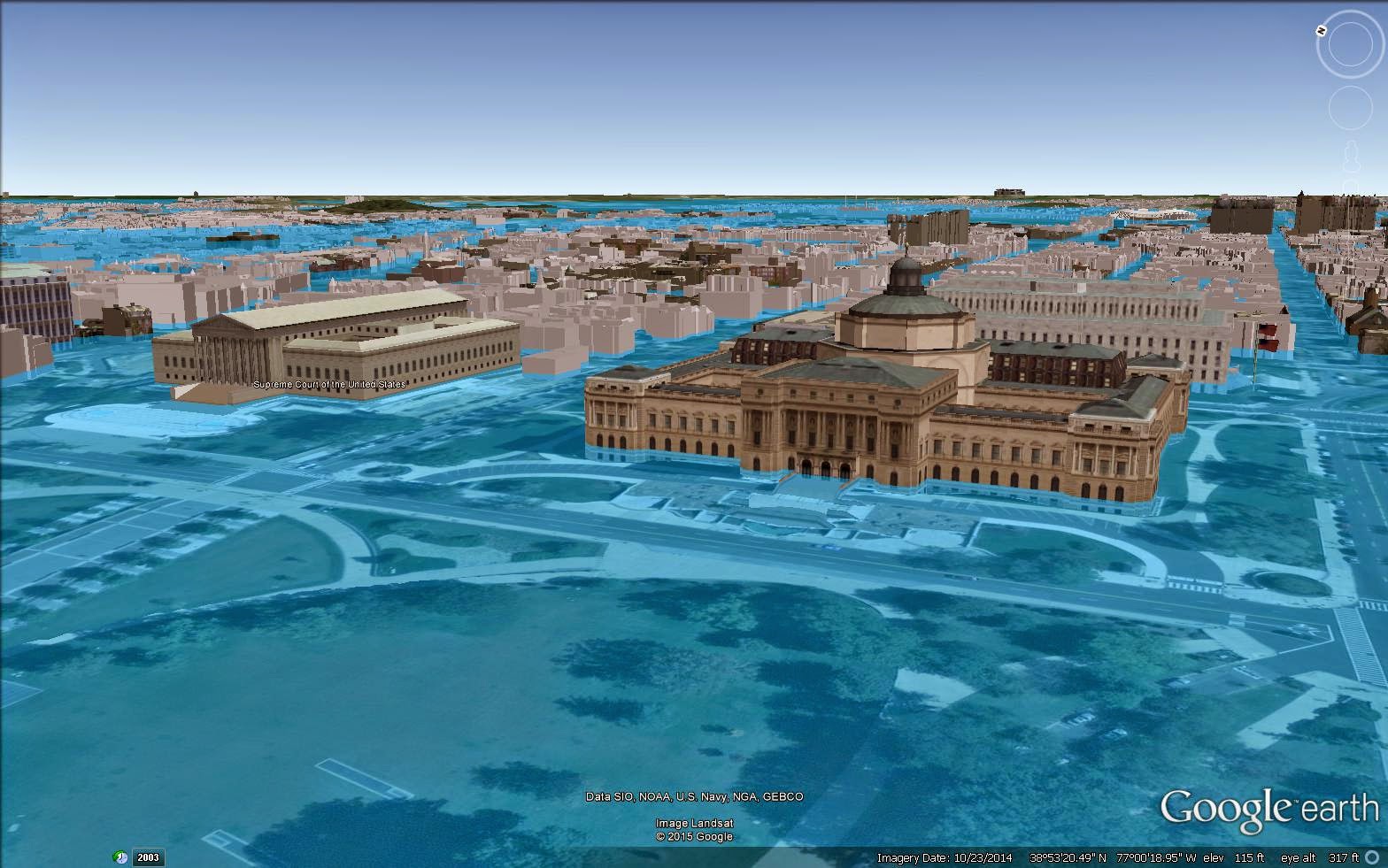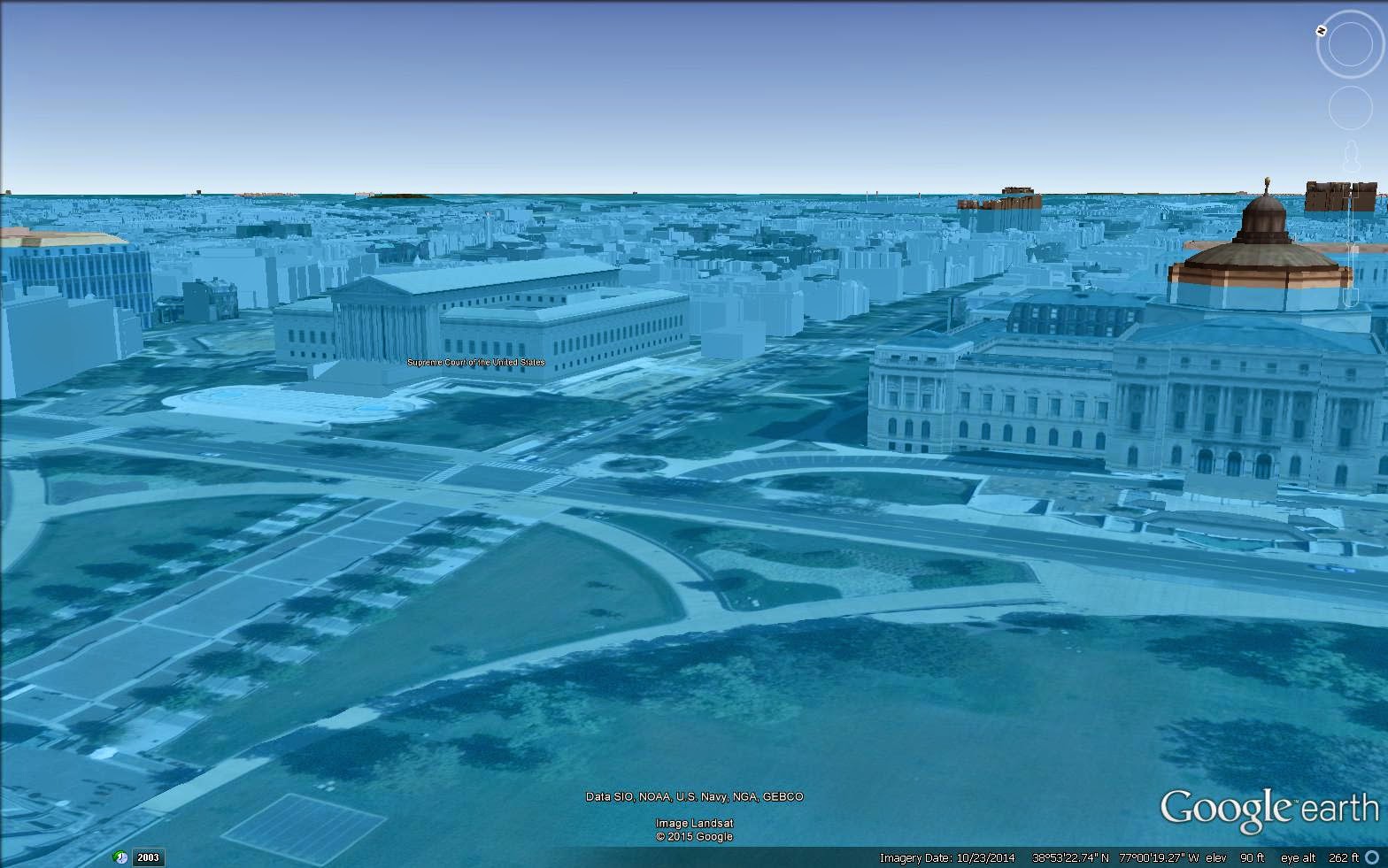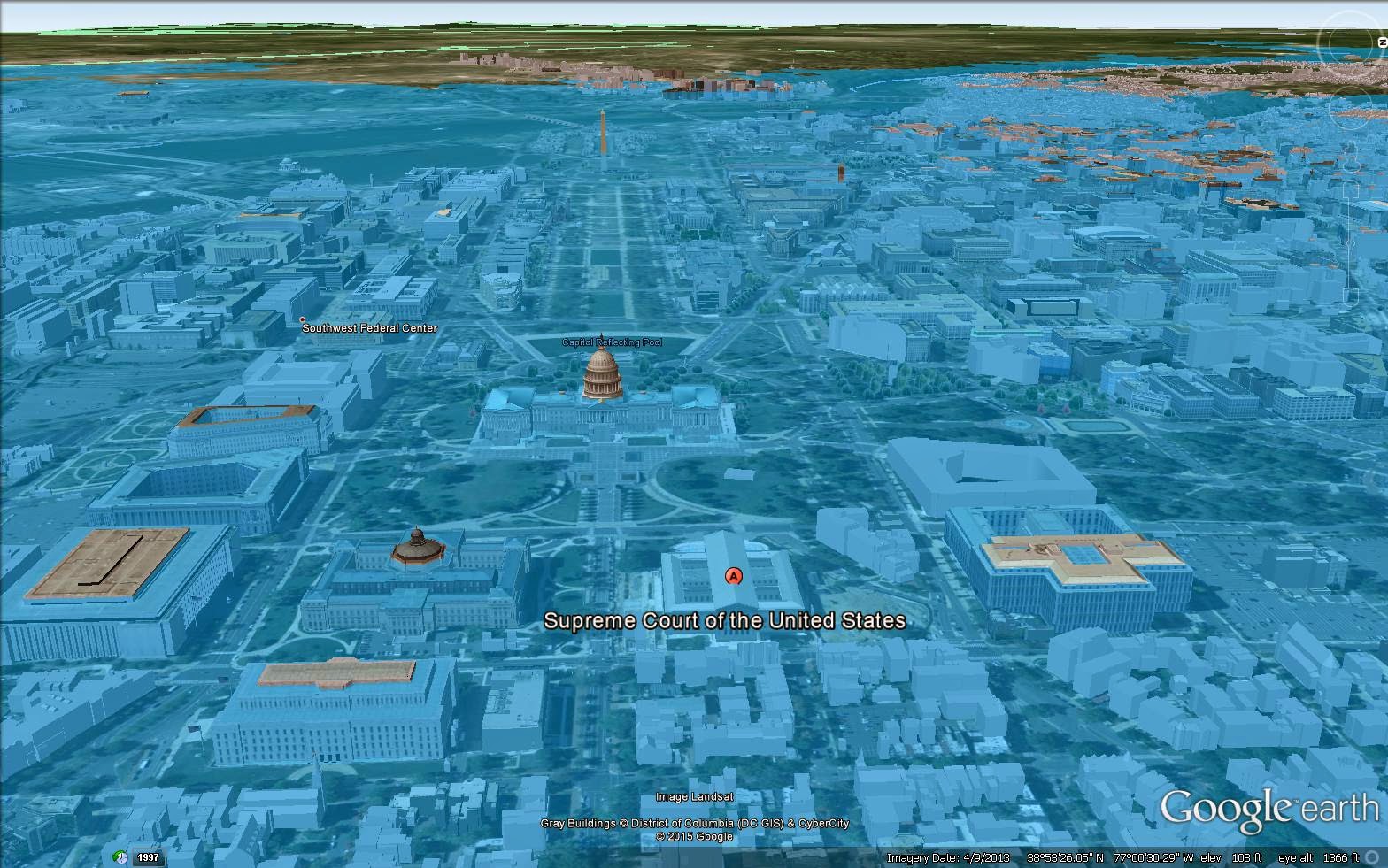
I live in the Washington, DC area and sometimes walk or bike by the Supreme Court. Like several other DC buildings and museums, it borrows from Greek and Roman architectural traditions and sports a facade that resembles the Parthenon atop the Acropolis in Athens.

The Parthenon was constructed in 447 BC and has been there for 2,462+ years, with some changes. It has withstood nearly 25 centuries of weather, being attacked, bombed and burned. As it stands today, it’s both majestic and tragic.
This projection of sea level rise from The 100 Metre Line blog suggests water will be lapping at the stairs of the Court by 2320, three centuries from now. In the nearby fountain at the Library of Congress, the sculpture of the Roman god Neptune will rejoin the sea.

Supreme Court (left) and Library of Congress after 30 meters (98 feet) of sea level rise

After 60 meters (197 feet) of sea level rise
If sea levels continue rising, the entire Court building could be underwater by 2600, 585 years from now.

Washington, DC after 60 meters of sea level rise
Our understanding of climate change is incomplete, so these numbers aren’t perfect. But they are a realistic, educated estimate based on what we know now.
This is not yet foreordained. Perhaps we develop mad geoengineering skills, 3D print massive sea walls, or take other measures to mitigate the climate crisis.
But if we maintain our current course, if we fail to develop a global consensus and act, this becomes a likely scenario. And we must act before the changes become too great to roll back.
Incidentally, the Parthenon is 490 feet, or 149 meters above sea level. Even if all the world’s ice melts, it will remain comfortably above sea level.
The Greeks raised their great buildings to last. We are on track to drown ours.
With thanks to the 100 Metre Line and the DrownYourTown simulator.